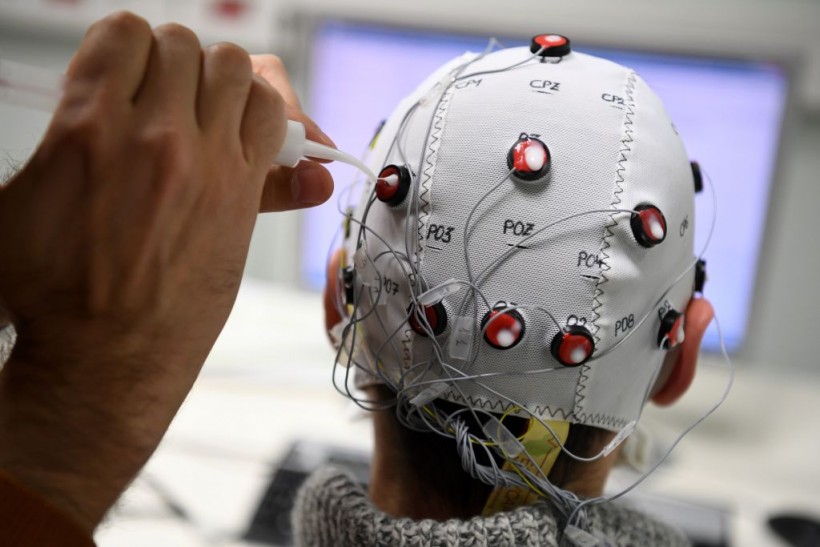The Wyss Center for Bio and Neuroengineering recently released a white paper revealing the first neural signals recorded by the ABILITY BCI or brain-computer interface system.
As specified in a Mirage News report, the technology is laying out the plan for a forthcoming human clinical trial with ABILITY to enable communication for individuals locked in as a result of brain stem stroke or amyotrophic lateral sclerosis, or ALS.
The Wyss Center team, academic and clinical collaborators, and a network of industrial technology partners are developing ABILITY. This wireless medical device can be planted to enhance the quality of life and offer independence for people with paralysis.
Wyss Center Senior Neuroscientist Jonas Zimmerman, Ph.D., explained neuroscience is experiencing a worldwide renaissance.
ALSO READ: Therapeutic Wireless Rechargeable Tiny Brain Implant Can Be Controlled Using Smartphone

The photo shows a researcher using a Brain-Computer-Interface helmet, enabling one to select symbols without motor command. The headset detects the brain's signals with electrodes placed on the scalp.
New Technologies for People with Severe Paralysis
In recent years, many research teams and industry leaders have developed new technologies ready for tailoring for people with severe paralysis.
Zimmerman said that now is the time to build on such achievements, solve the final hurdles, and bring neural interface technology to people who need it most.
The Wyss Center and Zimmerman's lab team are working together towards the same objective of restoring communication for those locked in.
According to Professor Nick Ramsey from the UMC Utrecht Brain Center and Wyss Center collaborator, they believe that future BCIs will go for current outside technology and have the exciting probability of bringing new levels of independence to people who have paralysis in their everyday life.
A Breakthrough Implant Technology
Wyss Center Chief Technology Officer George Kouvas, MBA, said with completely implantable BCIs still in their infancy, the approach at the Wyss Center is to provide a versatile system that not only links to multiple electrode technologies but although that records neural signals from a lot of channels at extremely high frequencies and wirelessly delivers the raw data using the high-speed optical link.
In these early days, as specified in a similar Bioengineer.org report, the BCI experts said they believe that a versatile technology such as ABILITY deals with the early adopters' needs and, as a result, has the potential to help the BCI market grow.
The whitepaper draws on experience from a recent clinical case study that successfully allowed BCI communication for a person locked in due to ALS.
It reviews the present methods of recording electrical activity from the brain, not to mention describing the clinical need for breakthrough implant technology.
Lastly, the Wyss Center reported, it's describing the next steps to clinical research that will analyze the device performance and the acceptance of implantable BCIs by patients, caregivers, and healthcare professionals.
Brain-Computer Interfaces
BCIs measure brain activity, extract features from that particular activity and convert such features into outputs replacing, restoring, enhancing, supplementing, and improving human functions.
BCIs may substitute lost functions, like speaking or moving. They may restore the ability to control the body by stimulating nerves or muscles that move the hand.
Brain computers have been used as well to enhance functions, like training users to improve the remaining function of impaired pathways needed to grasp. BCIs can also improve function, such as a sleepy driver waking up. Lastly, a BCI might be supple.
Related information about BCI is shown on DW Shift's YouTube video below:
RELATED ARTICLE: Paralyzed Man Tweets With His Mind Through Microchip Brain Implant
Check out more news and information on Neuroscience in Science Times.














